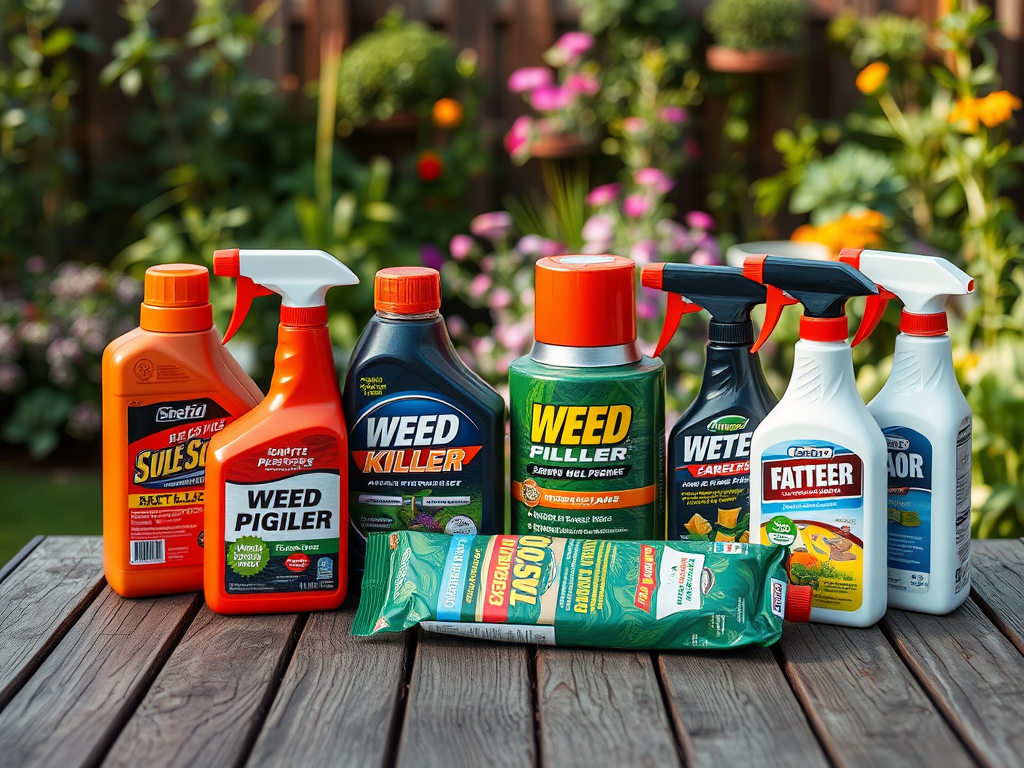Maintaining a picturesque lawn is often a labor of love, but nothing can ruin the experience quicker than an invasion of pesky weeds. From wild grasses to stubborn broadleaf plants, homeowners face a diverse array of unwanted guests that can choke the life out of a vibrant yard. Understanding how to effectively use weed killers is crucial for achieving the green oasis you desire. The right herbicide not only eliminates these intruders but also promotes healthy growth for your desired grass species. In this article, we will delve into the various types of weed killers available, guiding you through the selection process to ensure that your lawn remains lush and weed-free. Join us as we explore the essential tips and tools that enable homeowners to reclaim their outdoor spaces.
Understanding Weed Killers

Weed killers, also known as herbicides, are invaluable tools that assist in maintaining a healthy, well-manicured lawn. They work by targeting unwelcome plants that compete for nutrients and water, disrupting the ecosystem you’ve carefully cultivated. Various formulations exist, each tailored to defeat specific types of weeds, ranging from annual invaders to perennial nuisances. It’s essential to recognize the two main categories of herbicides: pre-emergent and post-emergent. Pre-emergents prevent weed seeds from sprouting, while post-emergents tackle those that have already emerged. By choosing the right type, you set the groundwork for a flourishing lawn.
- Post-Emergent Herbicides: Effective against weeds that have already broken through the soil.
- Pre-Emergent Herbicides: Ideal for halting the germination of weed seeds.
- Selective vs. Non-Selective: Selective herbicides eliminate specific weed types, whereas non-selective ones will kill all plant matter they come into contact with.
Factors to Consider When Choosing a Weed Killer

Choosing the right weed killer is not a straightforward process; numerous factors must be considered to ensure you achieve optimal results. One determinant is the type of lawn you possess, as different grasses respond uniquely to various treatments. Identifying the weeds inhabiting your lawn is equally critical; knowing whether you are dealing with annual, perennial, broadleaf, or grassy weeds will influence your choice of herbicide. Furthermore, environmental considerations cannot be overlooked. The safety of beneficial plants, pets, and wildlife should factor heavily into your decision-making process, particularly when opting for synthetic products. Understanding these variables will better enable homeowners to select the most effective treatment.
Lawn Type and Composition
Your lawn’s composition plays a pivotal role in determining which weed killer will be the most beneficial. Cool-season grasses, such as Kentucky bluegrass, thrive in different conditions than warm-season varieties, like Bermudagrass. This diversity means that homeowners should tailor their approach based on their specific lawn type. Additionally, the existing soil quality and micro-environment, such as sun exposure and drainage, can influence how well a given herbicide performs. Conducting a thorough analysis of your lawn’s characteristics will empower you to make a more informed decision.
Weed Type Identification
Accurate identification of your lawn’s weeds is crucial for effective treatment. Here’s a succinct list of some common types of weeds:
- Annual Weeds: These complete their life cycle in one year, such as crabgrass and chickweed.
- Perennial Weeds: These come back year after year, like dandelions and clover.
- Broadleaf Weeds: Typically have wide, flat leaves and include species like thistle and plantain.
- Grassy Weeds: Mimic grass and include species like nutsedge and foxtail.
| Type of Weed | Example | Best Treatment |
|---|---|---|
| Annual Weeds | Crabgrass | Pre-emergent Herbicide |
| Perennial Weeds | Dandelions | Post-emergent Herbicide |
| Broadleaf Weeds | Thistle | Selectively Apply |
| Grassy Weeds | Nutsedge | Non-selective Herbicide |
Top Weed Killers for Lawns
When it comes to selecting the right product for your lawn, having a solid foundation of options can be extremely beneficial. Here, we’ll highlight some of the top weed killers available on the market to help you make an informed choice. Each product features its unique benefits, catering to various lawn types and weed issues. Understanding what sets these products apart enables you to select one that aligns with your specific needs.
- Ortho Weed B Gon: A highly rated selective herbicide known for its quick action on broadleaf weeds while remaining safe for many turf types. Works within hours and comes with a convenient spray attachment.
- Roundup For Lawns: This powerful formula specializes in controlling stubborn perennial weeds, combining both pre-emergent and post-emergent properties for maximum effectiveness.
- Scotts Turf Builder Weed & Feed: An all-in-one solution that fertilizes your lawn while killing weeds.
Application Tips for Optimal Results
Even the best weed killer can underperform if not applied correctly. Proper application techniques are essential for ensuring your chosen herbicide works effectively. Timing plays a significant role in this process; applying herbicides during the optimal growth seasons—typically spring and fall—can enhance effectiveness. Correct mixing and measurement of the product are critical components. Over-saturation can damage both weeds and grass, as well as lead to environmental concerns. Always review the manufacturer’s instructions for guidelines tailored to that specific product.
Safety should remain at the forefront whenever handling chemicals like weed killers. Taking appropriate precautions helps protect not only yourself but also pets and children. Using personal protective equipment, such as gloves and masks, is advisable during application. Furthermore, consider the timing of application to minimize the risk of exposure for those nearby. Keeping children and pets off treated areas until the product has dried guard against unintended contact. These measures can help foster a safe home environment.
Conclusion
Using the right weed killer can significantly enhance the health and appearance of your lawn. By understanding the different types of products available, considering essential factors, and applying them correctly, homeowners can maintain a lush, weed-free yard. Selecting the appropriate herbicide tailored to your specific lawn conditions and weed types is vital. Furthermore, employing proper application techniques and adhering to safety precautions will yield the best results. With a proactive approach, you can protect your lawn and enjoy all the beauty it has to offer.
Frequently Asked Questions
- What is the best time of year to apply weed killer? The best time is usually early spring or fall when weeds are most active.
- Are there organic options for weed killers? Yes, there are several effective organic weed killers available for eco-conscious homeowners.
- How soon can I replant after applying weed killer? This varies by product; always read the label for specific waiting periods.
- Can I apply weed killer to my lawn if I have children or pets? Yes, but it’s essential to keep them away from treated areas until the weed killer has dried and is safe.
- How do I identify the type of weeds in my lawn? You can identify weeds by their leaves, growth patterns, and associated characteristics; consulting a local gardening center can help as well.
